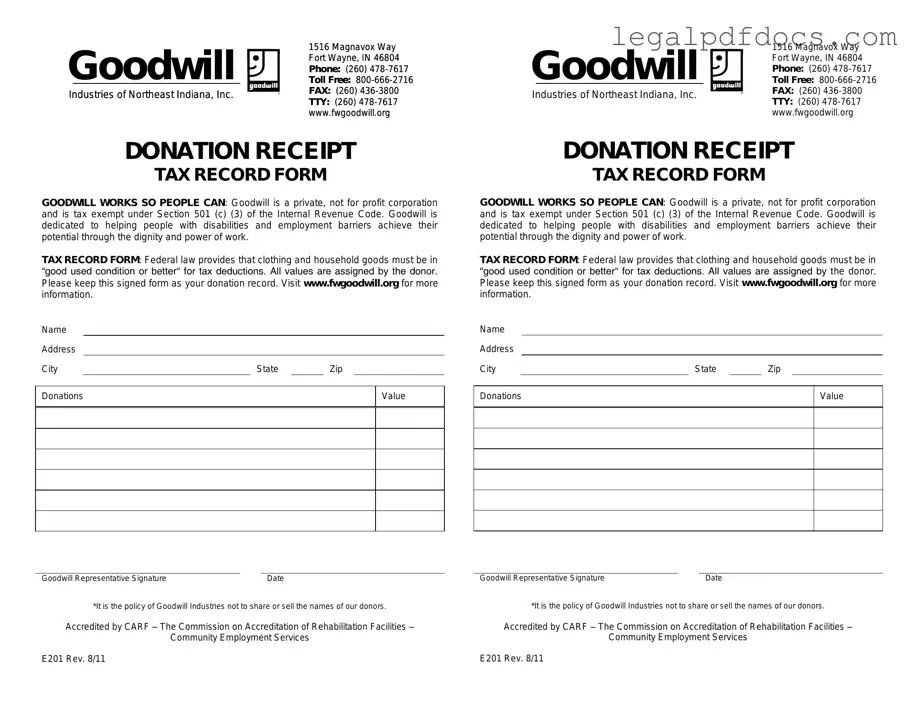Fill Out a Valid Goodwill donation receipt Template
The Goodwill donation receipt form is a document provided to donors after they contribute items to Goodwill Industries. This form serves as proof of your charitable donation, which can be used for tax purposes. To ensure you have the necessary documentation, fill out the form by clicking the button below.
Open Goodwill donation receipt Editor Here
